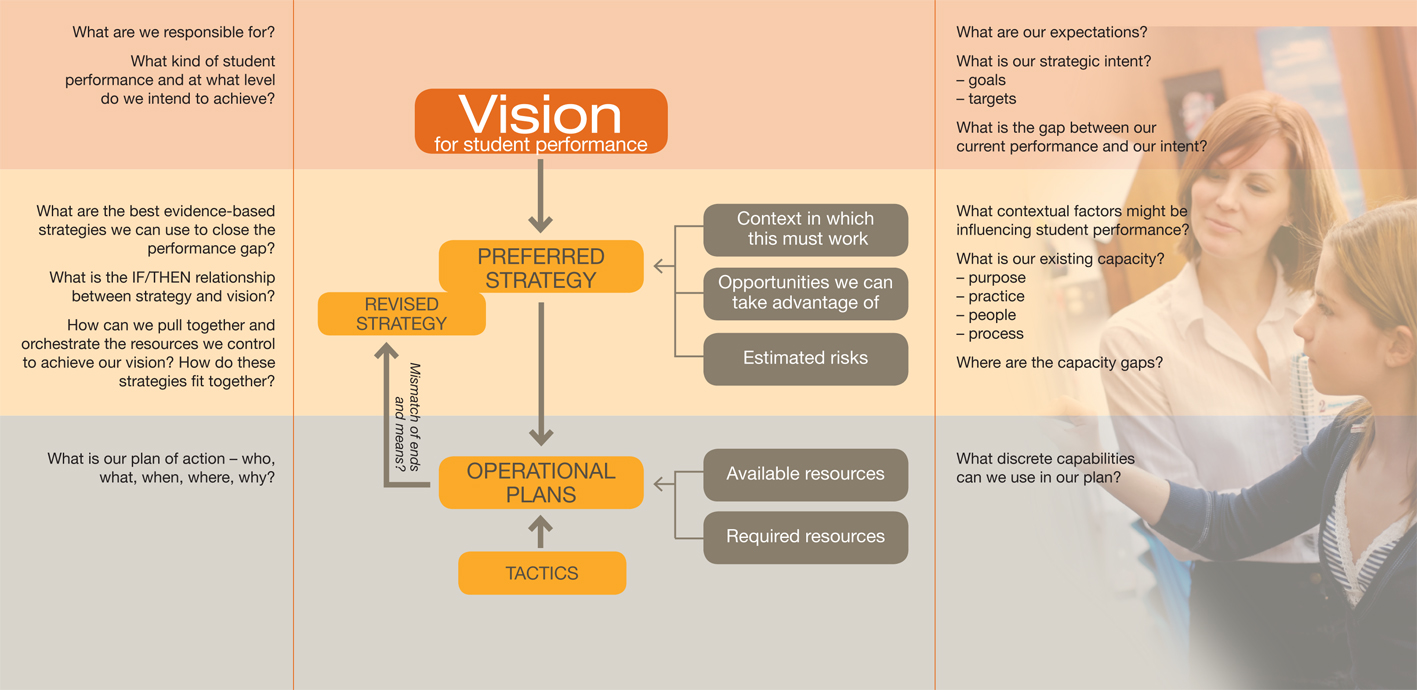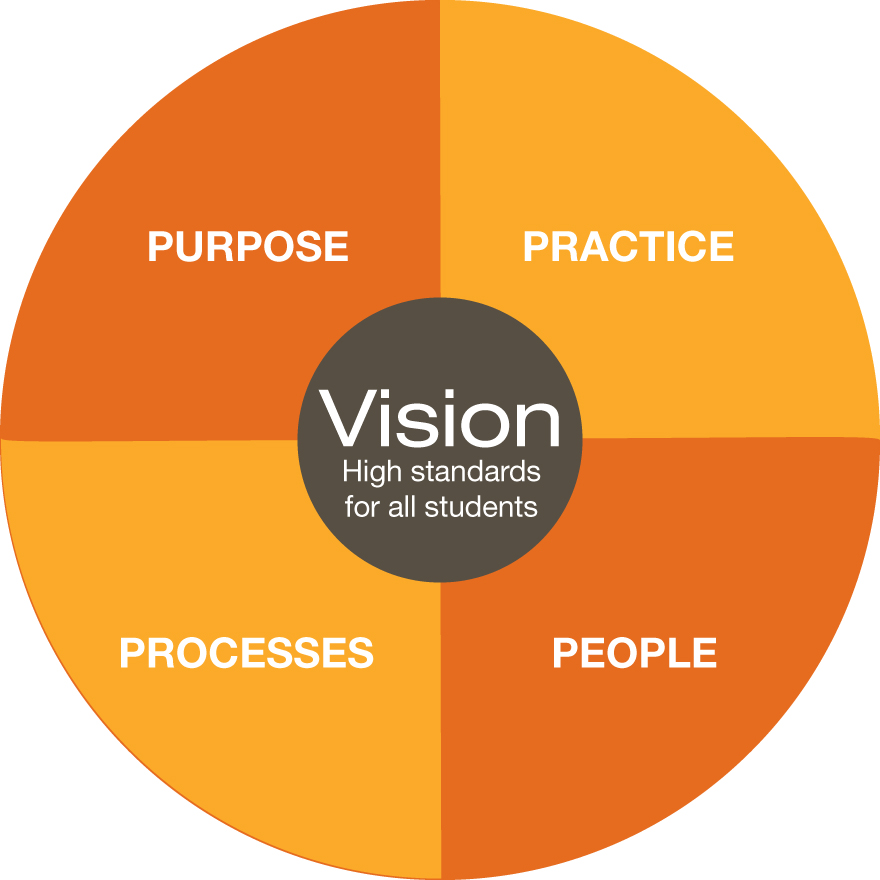Our Approach
The NCS approach to school review and improvement starts with some clear goals:
- To deliver distinctive, highly valued diagnostic school review, improvement and intervention services to schools, the Victorian Department of Education (DOE) and others.
- To help build each school’s internal capacity to improve Achievement, Engagement, Wellbeing and Productivity Outcomes.
- To make a contribution to each school’s development of Strategic and Implementation Plans.
The framework for achieving these goals incorporates three key elements:
- a School Improvement Tool
The School Improvement Tool (SIT) serves two purposes. As a diagnostic instrument, it is used to gauge the extent to which factors known to directly and indirectly influence student outcomes exist within a school.
The SIT also serves as a basis for developing an improvement ‘map’, clearly charting a course to embedding and sustaining effective practice for improving student outcomes.
At the core of the SIT is the classroom, where learning takes place. At this level the instrument examines classroom factors that directly influence student outcomes. Examination of the quality of teaching and learning is explored through the extent to which an agreed whole school approach to instructional practice exists, along with the extent to which the practices are actually observable in classrooms. Practice is examined through approaches to:
- Curriculum Framework
- Pedagogy
- Assessment & Reporting
Surrounding the classroom are various layers indicating factors known to indirectly influence student outcomes. In effect they represent the settings around the classroom that enable focused teaching to occur within them. The SIT is used to gauge the extent to which these factors exist within a school.
The SIT is represented graphically by the following diagram.

- a Strategic Thinking Framework
The Strategic Thinking Framework describes a process for thinking through what a school intends to achieve and how it will achieve it. Using the Framework helps clarify Goals, Targets, and Strategies that a school can include in a Strategic Plan.

- a School Capacity Diagnosis Model
The NCS capacity diagnosis model involves diagnosis of four broad dimensions of school capacity to achieve improved outcomes – Purpose, Practice, People and Processes. A school’s overall Capacity for Improvement (CI) is represented as a function of capacity in these four dimensions. This model, described as the P4 model, is depicted in he following figure.

Our methodology ensures that the review process is supportive and expertly facilitated. Our reviewers work with the school to identify and act on factors it can influence to enhance student outcomes.

